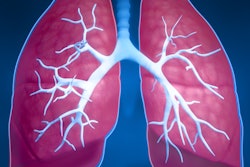Dear Artificial Intelligence Insider,
Ever since the early days of the COVID-19 pandemic, researchers have been exploring the clinical utility of artificial intelligence (AI) for aiding in the management of patients. In a new study, a group from Northwestern University reported that their AI algorithm could detect COVID-19 pneumonia on chest x-rays at a level comparable to experienced thoracic radiologists.
The researchers believe their system could be used to rapidly screen patients being admitted to the hospital for reasons other than COVID-19. What's more, it could also potentially flag patients for isolation and testing who are not otherwise being assessed for the virus. Our coverage of the study is the subject of this edition's Insider Exclusive.
An AI algorithm can also deliver a high level of accuracy for distinguishing between cases of COVID-19, influenza A/B, nonviral community-acquired pneumonia, and healthy subjects on CT exams. In addition, a deep-learning model can predict if a patient with COVID-19 symptoms will need supplemental oxygen.
In other AI developments, deep learning-based image reconstruction algorithms can yield higher pediatric CT image quality and lower radiation dose than other conventional reconstruction techniques. Also, the combination of a machine-learning algorithm and radiomics offers a promising level of accuracy for differentiating noninvasive from invasive pulmonary adenocarcinoma.
Additionally, CT texture analysis software based on machine learning can improve reader performance for assessing patients with chronic obstructive pulmonary disease, interstitial diseases, or infectious diseases. AI can also be utilized to opportunistically screen for metabolic syndrome in patients receiving abdominal CT exams for other reasons and who don't have symptoms of this dangerous condition. Meanwhile, a new AI and radiomics research lab for thoracic imaging has been launched at the University of Massachusetts.
In mammography, using an AI algorithm concurrently during interpretation can help radiologists to enhance their diagnostic performance on screening studies. Are women ready for AI to read their mammograms, though? Not yet, if a recent Dutch survey is any indication.
A knowledge gap on how to incorporate AI into radiology practices can be an obstacle to implementation, according to a recent study. Speaking of education, fourth-year radiology residents were found to benefit from a pilot program that included formal instruction in AI and machine learning as well as collaboration with data scientists on developing models.
Chinese researchers also reported that an AI model can help improve the detection of cerebral aneurysms on CT angiography (CTA), but at the cost of a high false-positive rate. An AI algorithm can also be extremely sensitive for detecting large-vessel occlusion stroke on multiphase CTA. Also, an AI algorithm can segment and quantify hematoma on noncontrast whole-head CT exams in patients with acute hemorrhagic stroke.
AI can identify sarcopenia in glioblastoma patients and aid detection of metastasis on bone scintigraphy exams. It can also extract more data from conventional CT images, enabling single-energy CT to approach the performance of dual-energy CT without the additional radiation. Also, CT radiomics features can help predict tumor behavior in screening-detected lung cancer.
A recent study has concluded that AI software could potentially be utilized for automated preliminary assessments of chest radiographs. Algorithms can also find and classify the severity of pulmonary edema on chest x-rays, as well as characterize pediatric lateral x-rays.
RSNA 2020 is right around the corner, and AI will once again take center stage. Imaging consultant Michael Cannavo shares his tips for how to make the most of the virtual conference.
Do you have an idea for a story you'd like to see covered in the Artificial Intelligence Community? Please feel free to drop me a line.




















